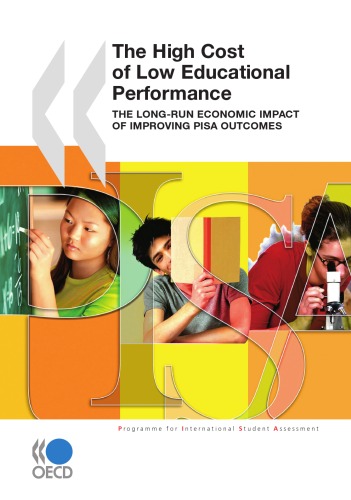

Most ebook files are in PDF format, so you can easily read them using various software such as Foxit Reader or directly on the Google Chrome browser.
Some ebook files are released by publishers in other formats such as .awz, .mobi, .epub, .fb2, etc. You may need to install specific software to read these formats on mobile/PC, such as Calibre.
Please read the tutorial at this link: https://ebookbell.com/faq
We offer FREE conversion to the popular formats you request; however, this may take some time. Therefore, right after payment, please email us, and we will try to provide the service as quickly as possible.
For some exceptional file formats or broken links (if any), please refrain from opening any disputes. Instead, email us first, and we will try to assist within a maximum of 6 hours.
EbookBell Team

5.0
48 reviews
ISBN 10: 9264077485
ISBN 13: 978-9264077485
Author: Brain Ware
While many nations express a commitment to improved educational quality, education often slips down on the policy agenda. Because the benefits of educational investments are seen only in the future, it is possible to underestimate the value and the importance of improvements.
This report uses recent economic modelling to relate cognitive skills as measured by PISA and other international instruments to economic growth. This relationship indicates that relatively small improvements in the skills of a nations labour force can have very large impacts on future well-being. Moreover, the gains, put in terms of current GDP, far outstrip today’s value of the short-run business-cycle management. This is not to say that efforts should not be directed at issues of economic recession, but it is to say that the long-run issues should not be neglected.
A modest goal of having all OECD countries boost their average PISA scores by 25 points over the next 20 years which is less than the most rapidly improving education system in the OECD, Poland, achieved between 2000 and 2006 alone implies an aggregate gain of OECD GDP of USD 115 trillion over the lifetime of the generation born in 2010 (as evaluated at the start of reform in terms of real present value of future improvements in GDP) (Figure 1). Bringing all countries up to the average performance of Finland, OECDs best performing education system in PISA, would result in gains in the order of USD 260 trillion (Figure 4). The report also shows that it is the quality of learning outcomes, not the length of schooling, which makes the difference. Other aggressive goals, such as bringing all students to a level of minimal proficiency for the OECD (i.e. reaching a PISA score of 400), would imply aggregate GDP increases of close to USD 200 trillion according to historical growth relationships (Figure 2).
Chapter1 : Introduction
Chapter 2: Content
Chapter 3: Conclusion
Chapter 4: Appendices
Chapter 5: Glossary
Chapter 6: References
Chapter 7: Index
pisa the goat
pisa high five
pisa the leaning tower
pisa cochise
pisa.tower